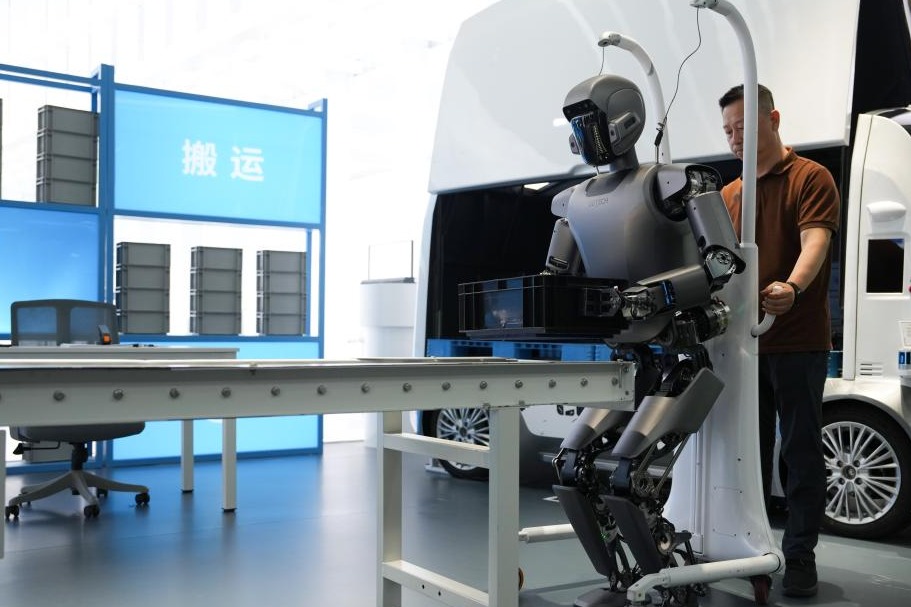Energy startups on same wavelength

Harnessing the energy of ocean waves is a concept that is at least 200 years old, but a clear technology has yet to surface. This week, a startup from China is unveiling a mechanism that might just catch the big wave.
"We want to attract California users by offering a compelling and sweet deal - reliable, cheap and clean electricity to single house or small community," Sam Timofeev, a management partner of Hong Kong-based Finima Innovations, told China Daily in Palo Alto.
Timofeev was among several Chinese cleantech startups on a trip to Silicon Valley to take part in the Hong Kong Science and Technology Parks (HKSTP)-hosted CleanTech Forum, an annual international showcase for venture-grade, emerging clean energy investment opportunities, where US businesses can also get coached on how to take advantage of the facilities and services provided by this hub of innovation in Asia.
"This offers us a chance to stand out," Timofeev said. "Consumer wave energy is cool - as long as it really works and can be applied."
The target market for Finima's "breakthrough" technology is individual households, coastal communities and small-scale and distributed electricity generation, he said.
The plan for most of the Chinese cleantech technology startups' attending the forum is networking, getting out and speaking with people who are likeminded and creative.
As of Jan 31, a total of 41 partner companies and 13 incubatees have found a home at the HKSTP, including three energy application projects, five energy efficiency projects, eight environmental engineering, four Green transportation and electric vehicle ventures, six on renewable energy, 14 concerning solid-state lighting, and more.
HKSTP's incubation program provides assistance to technology startups in their vulnerable inception stages, enabling them to grow and flourish.
The park also launched a soft-landing program to provide a platform for overseas and local universities, research institutes, their spin-offs and startup companies to promote their innovations and technologies among Hong Kong industries.
"China has demonstrated strong potential and a commitment to driving cleantech development," said Frank Leung, a consultant on green-tech and precision engineering with HKSTP.
In a 2014 budget speech, China's finance ministry said it would increase spending on the environment by 7.1 percent - after a drop of 9.7 percent in 2013 - as the nation tries to tackle harsh air pollution that has shrouded many of the nation's cites and the industrial waste that has fouled many of its waterways, Leung pointed out.
In a recent keynote speech to parliament, Premier Li Keqiang vowed to "declare war on pollution" and promised the same level of resolve the government has shown in its efforts to fight poverty.

Also, China wants to reduce its dependence on cheap but dirty coal for energy, boost the use of natural gas and raise environmental standards for fuels like diesel and gasoline, said Leung.
"Given such firm commitment from the policymakers, there is huge potential for clean-tech startups to take the initiative to look for cleaner, more renewable energy to deliver on the targets set by the government, and to look for private investment to fuel the development of such innovations," Leung said.
"If you ask about Chinese government policies, I would say we are satisfied with their developments and actual work," Timofeev said.
However, it still takes time for the booming Chinese clean-tech startups to realize their core competitiveness and figure out how to make money.
In the Finima case, the team moved in the wrong direction at first by researching a high-efficiency power-generating mechanism.
"We spent nearly two months and lots of resources building a mechanism for transforming maximum torque into electricity, with a minimal lost of power in the generating process," said the founder of Finima, Chan Kwai Nam.
"Also, we built more than 10 different new generator mechanisms, tested them hundreds of times and finally got a 0.45 percent power transforming efficiency improvement compared with traditional mechanism," he said.
Then, he said, the team finally realized they were wasting too much time building a generator that had nothing to do with ocean wave energy.
The company refocused their aim on wave movement, water particle properties, buoy and mooring mechanism analysis and hundreds of failure case studies, with extensive modeling and testing, he said.
"The mechanism is now an advance wave-movement capturing system, a breakthrough from existing technologies," Chan said.
Contact the writer at p>
(China Daily USA 03/18/2014 page2)






























